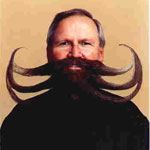Dr. Rassman & Dr. Pak-
I want to first thank you both for providing this blog. After looking online for some quality information and only coming across gimmicks – this is the first website I’ve found that I feel like I can trust.
Ok, here’s my question: I know you said you do not typically do body hair to scalp transplants. But bear with me here…
1) Does where the hair is growing determine the amount of pigment and texture of the hair? If body hair was moved to the scalp – does it continue to look like body hair?
2) I am a hairy guy, body hair wise. Head hair, I’m thinning. What if my body hair growth cycles are just different? Do they slow down over time? I trim my chest hair about once every 3 weeks. It would probably grow a half inch per month if I let it.
Btw, I’m a 25 caucasion male.
I read a great deal, so here are my answers based upon my understanding. Hair moved will look like the hair did at the source (donor site), but it may grow longer based upon recipient sites influences. Body hair on the scalp will continue to look like body hair on the scalp.
The length of time that body hair transplants being studied seem to be about 8 years or so. There appears to be an increasing growth rate possible when hair is moved (say from the leg to the scalp). Hair cycles may also change, but not enough to compete with scalp hair (king of hair growth length and cycle times of up to 6 years or so). If you let your body hair grow to length, I doubt that it would continue to grow longer and longer. Every body hair has its growth cycle which dictates the time the hair will be in anagen. If a body hair grows 4 months at a rate of 1/2 inch a month, it would grow out to 2 inches maximum before falling out. I am sure that if you checked your bed sheets and your body hair is dark (easiest to see with white sheets), you will see a constant shedding on your sheets if you let your body hair grow out.
![]()
![]()
Paid advertisements (not an endorsement):



 A few years ago i had some stiches places on my mustache area and it left a scar and now hair doesnt grow in the places that the stitches were placed.
A few years ago i had some stiches places on my mustache area and it left a scar and now hair doesnt grow in the places that the stitches were placed. “Restoration Robotics, Inc. (Mountain View, CA) is a company using image-guided robotic technology to perform hair restoration by emulating the FUE technique. The robotic technology is in development. Currently, it is not approved by the FDA and the technology is not for sale”, said a company spokesperson when I contacted them. I also found this press release about Restoration Robotics from 2003,
“Restoration Robotics, Inc. (Mountain View, CA) is a company using image-guided robotic technology to perform hair restoration by emulating the FUE technique. The robotic technology is in development. Currently, it is not approved by the FDA and the technology is not for sale”, said a company spokesperson when I contacted them. I also found this press release about Restoration Robotics from 2003,